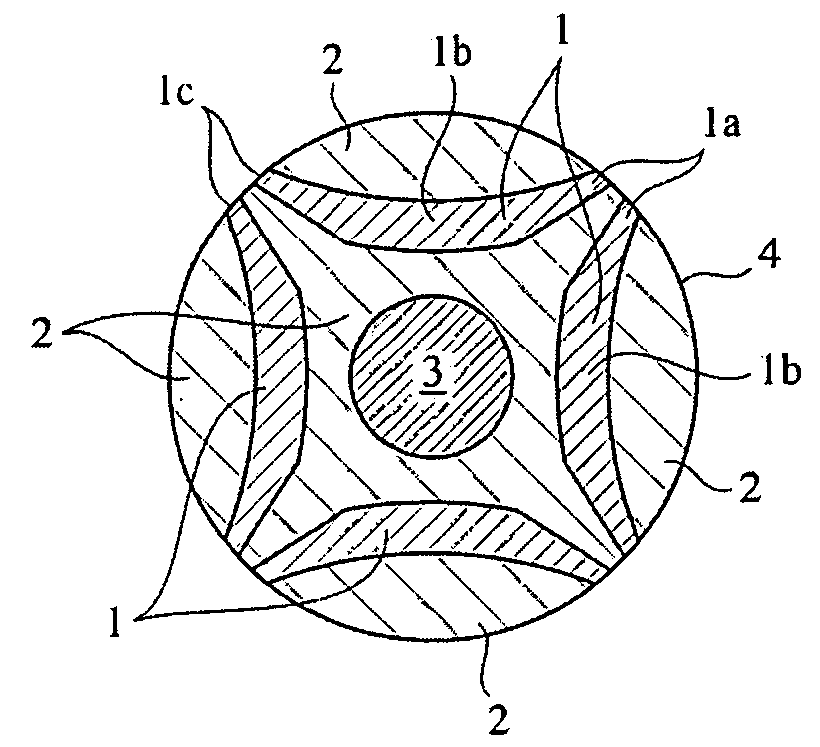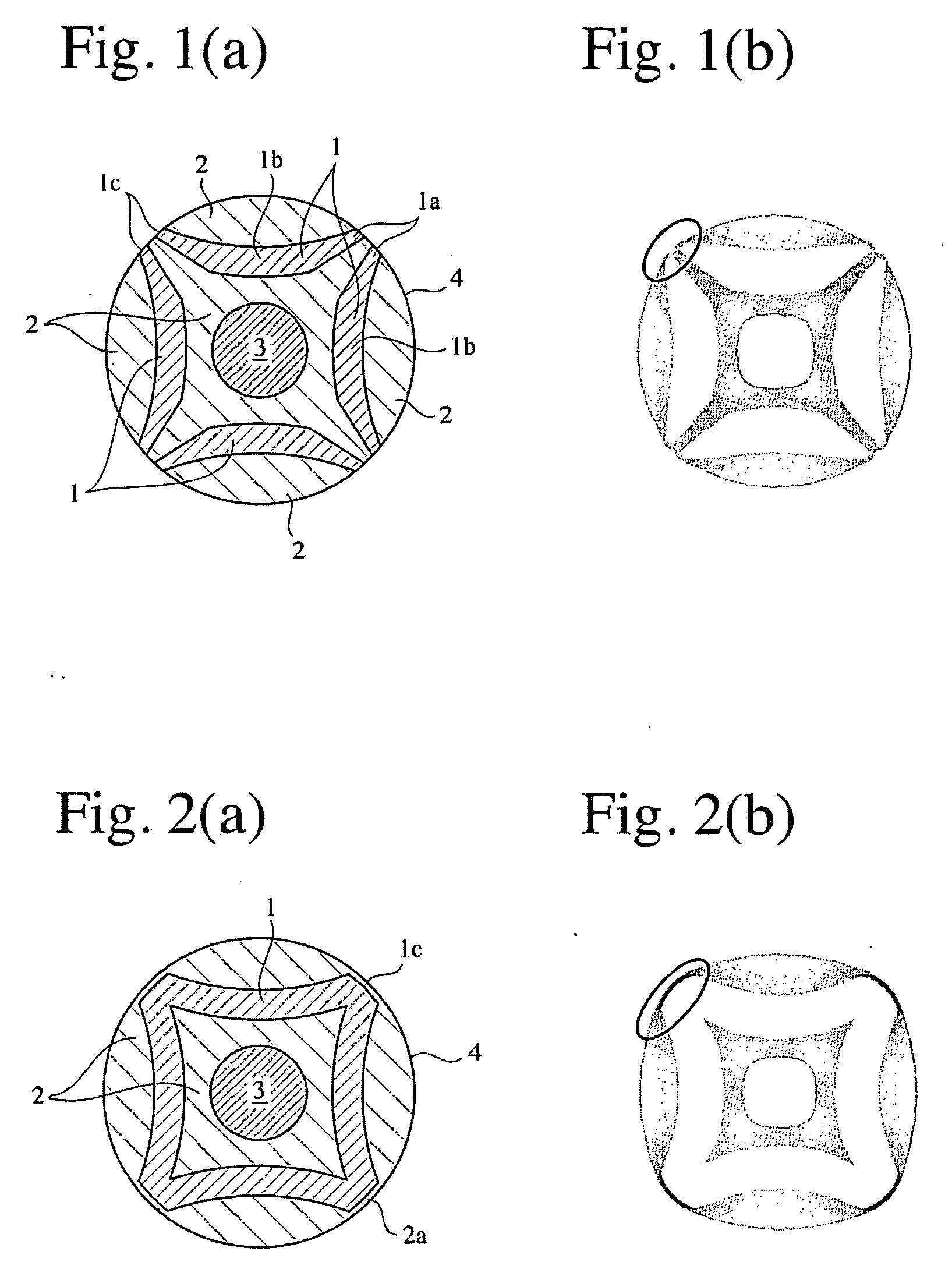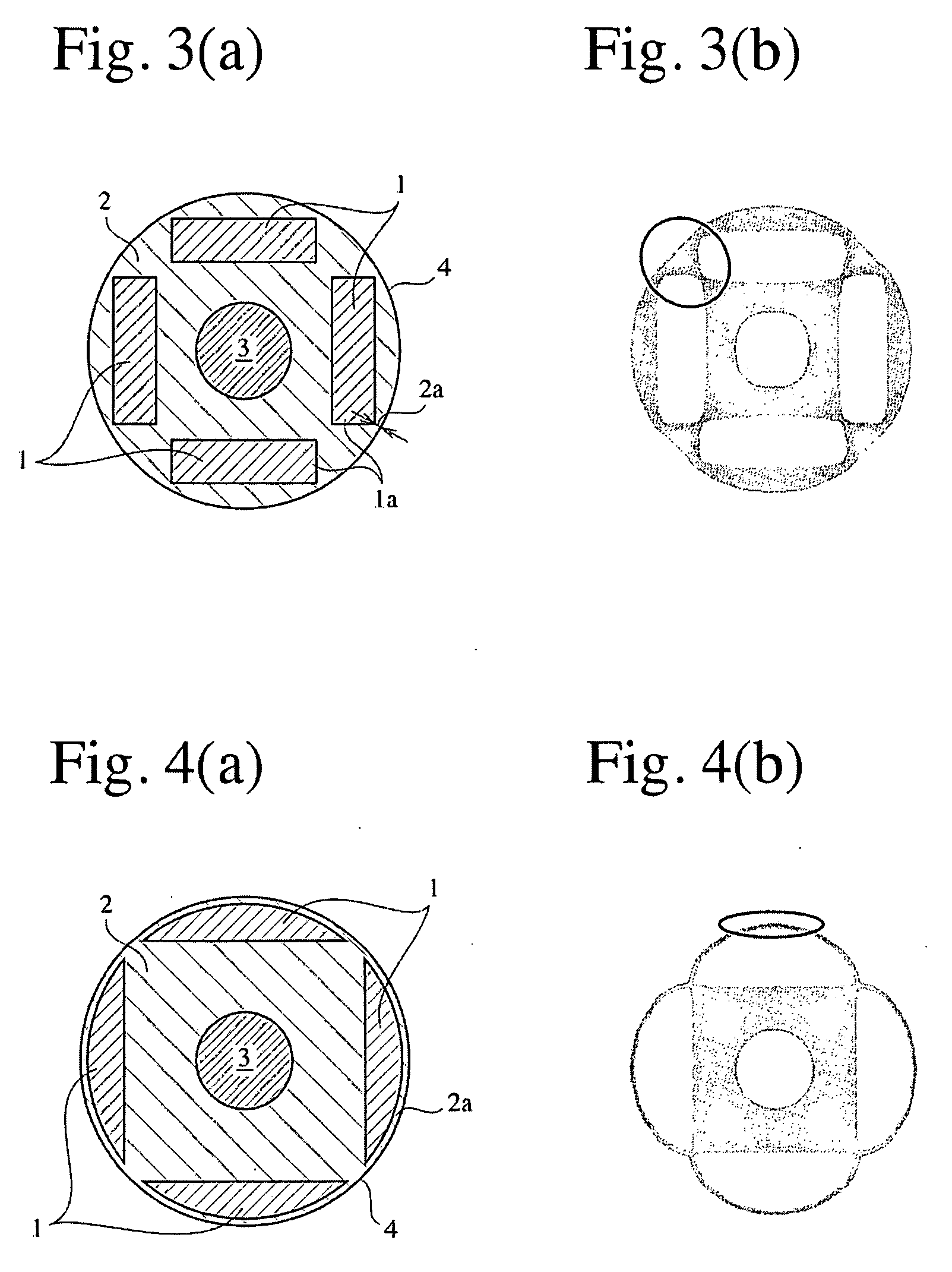Rotor and process for manufacturing the same
a technology of rotating parts and rotors, applied in the field of rotating parts, can solve the problems of lowering the efficiency of motors, undesirable magnetic fluxes, and unsuitable high-speed rotation motors, and achieves high degree of freedom, high press-bonding strength, and effective use of magnetic forces.
- Summary
- Abstract
- Description
- Claims
- Application Information
AI Technical Summary
Benefits of technology
Problems solved by technology
Method used
Image
Examples
example 2
[0107] In a rotor shown in FIG. 2(a), in which the end surfaces 1c of bonded magnet portions 1 were not exposed to a peripheral side surface 4, the thinnest portions 2a of the soft magnetic portion 2 between the end surfaces 1c of the bonded magnet portions 1 and the peripheral side surface 4 being as thin as 0.3 mm, a tensile stress was 19 MPa in the thinnest portions 2a, to which the largest tensile stress was applied. Though it was expected that a residual stress were relaxed in the rotor of Comparative Examples 1 and 2 shown in FIGS. 10 and 12, in which the soft magnetic portion 2 was divided by the bonded magnet portions 1 to inner and outer portions, outer soft magnetic portions 2 being freely expandable, it was found that cracking was actually suppressed more in the rotor having the shape shown in FIG. 2(a).
[0108]FIG. 13 shows the relation between the thickness of the thinnest portion 2a and a maximum residual stress in that portion. In a rotor design having a residual stres...
example 3
[0109]FIG. 3(a) shows a rotor comprising bonded magnet portions 1 each having a rectangular axial cross section embedded in a soft magnetic portion 2 with gaps between their ends 1a, 1a. The rotor had an outer diameter of 50 mm, and each bonded magnet portion 1 had a thickness of 5 mm, and a transverse width of 25 mm. The thinnest portions 2a of the soft magnetic portion 2 had a thickness of 1.3 mm. FIG. 3(b) shows a tensile stress distribution in the rotor shown in FIG. 3(a) when it was deformed. The largest tensile stress was applied to the thinnest portions 2a of the yoke, where the tensile stress was 11 MPa.
[0110] It was found by analysis that this rotor had substantially the same relation between the thinnest portions 2a and the maximum residual stress in the thinnest portions 2a as shown in FIG. 13, despite slight difference. Stress analysis with changed thickness of the bonded magnet portions provided the same results.
example 4
[0111]FIG. 4(a) shows a rotor comprising bonded magnet portions 1 totally embedded in a soft magnetic portion 2, each bonded magnet portion 1 having a cross section shape having an arcuate side extending along a periphery of the rotor and a linear bottom. The rotor had an outer diameter of 50 mm, and the bonded magnet portion 1 had the maximum width of 7 mm, and a bottom length of 35 mm. The soft magnetic portion 2 had a thin portion 2a having a thickness of 1 mm outside the bonded magnet portions 1. FIG. 4(b) shows a tensile stress distribution in the rotor of FIG. 4(a) when it was deformed. The largest tensile stress was applied to the thin portion 2a of the soft magnetic portion 2, where the tensile stress was 11 MPa.
[0112] It was by analysis found that this rotor had substantially the same relation between the thin portion 2a and the maximum residual stress therein as shown in FIG. 13, despite slight difference. Stress analysis with changed thickness of the bonded magnet portio...
PUM
| Property | Measurement | Unit |
|---|---|---|
| Length | aaaaa | aaaaa |
| Length | aaaaa | aaaaa |
| Fraction | aaaaa | aaaaa |
Abstract
Description
Claims
Application Information
 Login to View More
Login to View More - R&D
- Intellectual Property
- Life Sciences
- Materials
- Tech Scout
- Unparalleled Data Quality
- Higher Quality Content
- 60% Fewer Hallucinations
Browse by: Latest US Patents, China's latest patents, Technical Efficacy Thesaurus, Application Domain, Technology Topic, Popular Technical Reports.
© 2025 PatSnap. All rights reserved.Legal|Privacy policy|Modern Slavery Act Transparency Statement|Sitemap|About US| Contact US: help@patsnap.com



